Breeding your goats for the first time can be (and usually is) extremely stressful. Telling if your goat is pregnant is a skill you improve upon constantly, so before you start getting nervous, know that it has a learning curve.
Pregnancy is a natural process that finds its way without people’s help.
If you have changed the goat’s diet, it is easy to confuse pregnancy with simple bloating. You may also get frustrated after the first weeks post-breeding when you notice nothing. But understanding whether or not a goat is pregnant is an essential part of care.
So before you lose your mind with all the nuances, let us help you. Here’s the list of the most common signs of goat pregnancy, tested by experienced goatherds.
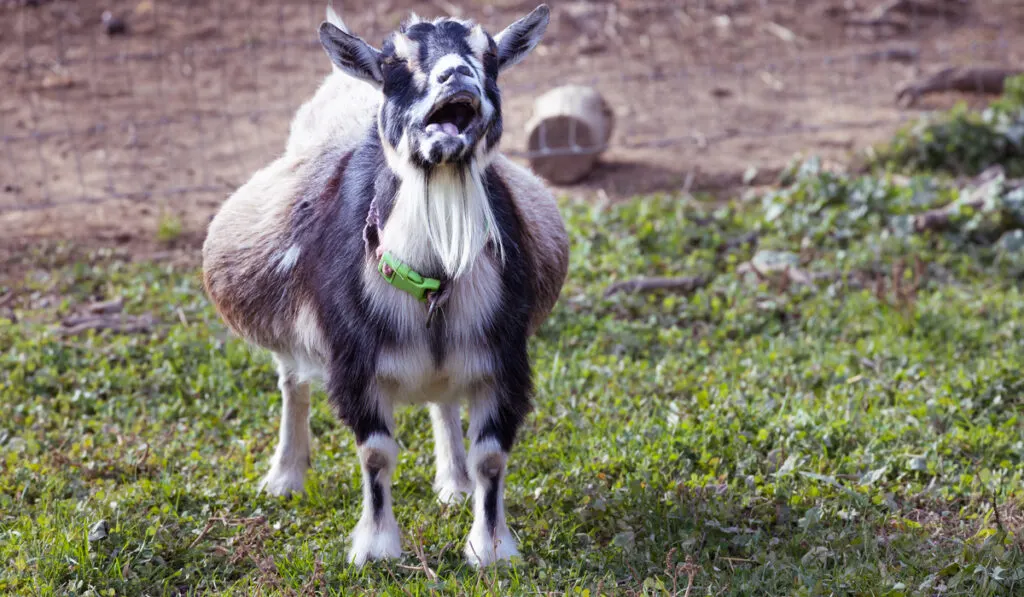
Table of Contents
How to Tell the Difference between Bloating and Pregnancy in Goats
Before we start talking about goat mamas, let’s spare a minute and clarify some physical changes in goats that can be confused with pregnancy.
Bloating
It may seem like an easy task to tell pregnancy apart from bloating. However, goats naturally have big stomachs filled with gases during digestion.
Pay attention to the size of the goat’s stomach, and if you notice it is bigger than usual, the first thing you should check is if it’s pregnancy or not.
Unless, of course, you haven’t bred them before. Then it’s definitely bloating.
Bloating is a common thing in goats when diet change takes place.
The first signs of bloat in goats include abdominal discomfort, discontent, lower appetite, and increased salivation.
To sharp-eyed herders, the goat’s stomach will gradually bulge on the left side due to a bloated rumen. The animal’s behavior will also change – afflicted goats tend to bite or kick themselves in the abdomen.
That’s how you tell your goat is bloated.
Pregnancy
With pregnant goats, the signs are different.
You will never see changes in your goats as soon as you breed them because there won’t be any for the first three weeks.
The symptoms of pregnancy usually emerge 3-4 weeks after breeding, so don’t worry if nothing’s happening immediately.
The full term of goat pregnancy takes about five months, approximately 150 days. The following physical changes that happen toward the end of that time will tell you for sure your goat is pregnant:
- The udder is full of milk
- Swollen vulva
- Growing abdomen
- Appetite shifts
- Personality changes (both for female and male goats)
8 Signs Your Goat Is Pregnant
Now that you can differentiate bloating from pregnancy, let’s talk about other less obvious signs of pregnancy you’d want to be aware of.
1. Not Being in Heat
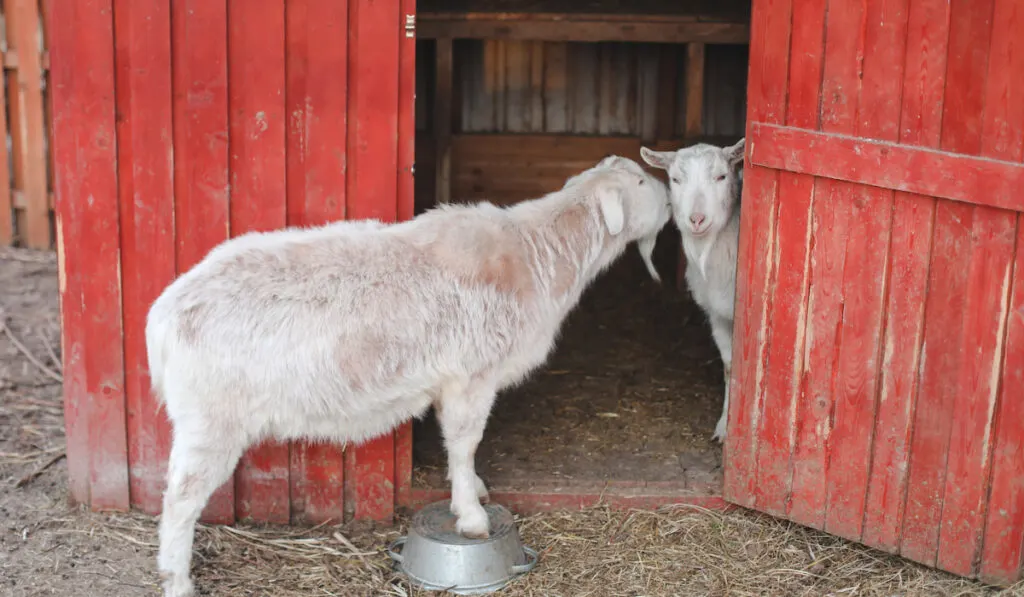
The very first tell-tale sign of goat pregnancy is a pause in the heat cycle. Changes in the heat cycle are the easiest way to tell something is going on, even if you’re not sure it’s pregnancy.
When in heat, the doe goat does become more sexually energetic around male goats.
The most evident changes are waggling their tails, hanging around by the fence, and screaming. A lot.
If you want to keep track of the heat date for your goat(s), it’s simple. The heat cycle in goats usually takes 21 days on average but can also vary from 18 to 24 days.
You can keep a diary to track the cycle. So the moment the heat cycle stops, you can expect pregnancy.
2. Puffy Back End
This sign is slightly less obvious and requires a little more attention from you.
When your goat is pregnant, it’s most likely the vulva will start to be slightly puffy.
Usually, the back end of a goat is quite tight and has a concave shape. You may notice this area becoming puffy and sloppy as the delivery date approaches.
3. Bagging Up
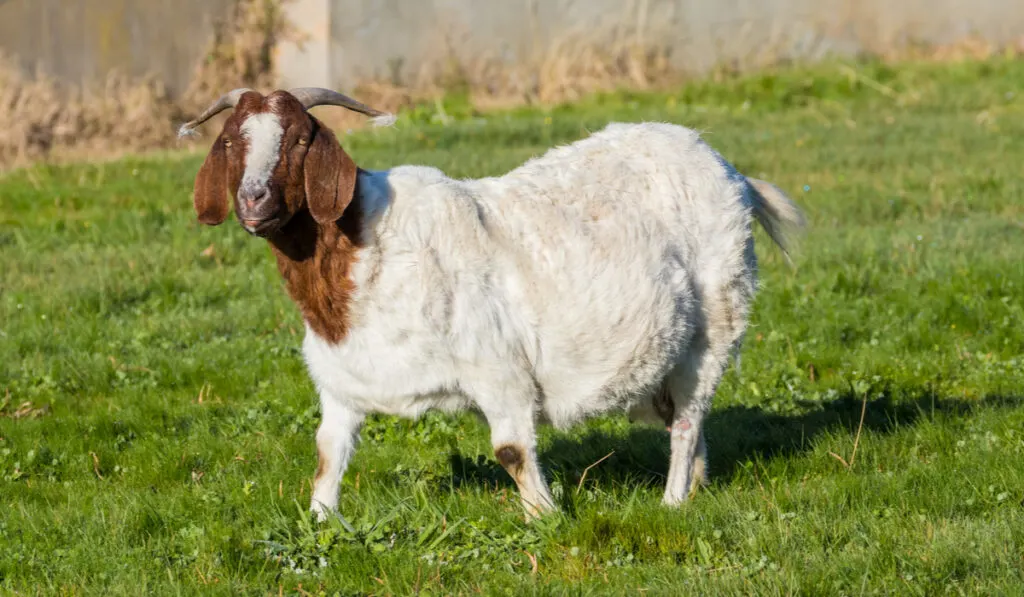
Together with a puffy back end, bagging up is a good sign of pregnancy.
Disclaimer: a puffy back end is a late sign that develops closer to the 4th-month mark.
Goats’ stomachs will naturally look a little bigger after the three weeks of pregnancy, and with the hormone rush, you’ll be able to get the signs before the actual bagging-up starts.
However, you should remember that every animal is unique, just like everything in nature. Sometimes, bagging up may develop only days or even hours before delivery.
Keep a good eye on your goat(s) to better learn about their biology and pregnancy changes.
4. Colostrum
Colostrum production is a great way to tell your goat is pregnant. After all, colostrum is the kid’s feed, full of all necessary elements and antibodies that newly born goats need to rocket-launch their development.
Usually, a goat’s colostrum production starts 7 to 10 days before she gives birth.
If it’s possible and you’re friendly with your goat, you can try and check their udder. If the goat is pregnant and due soon, its udder will be prominent and thick if you squeeze it lightly.
And if you manage to get some milk, take a good look at it. Colostrum should have a thick texture and yellowish color as this milk is rich in protein and white blood cells.
5. Fetal Movement
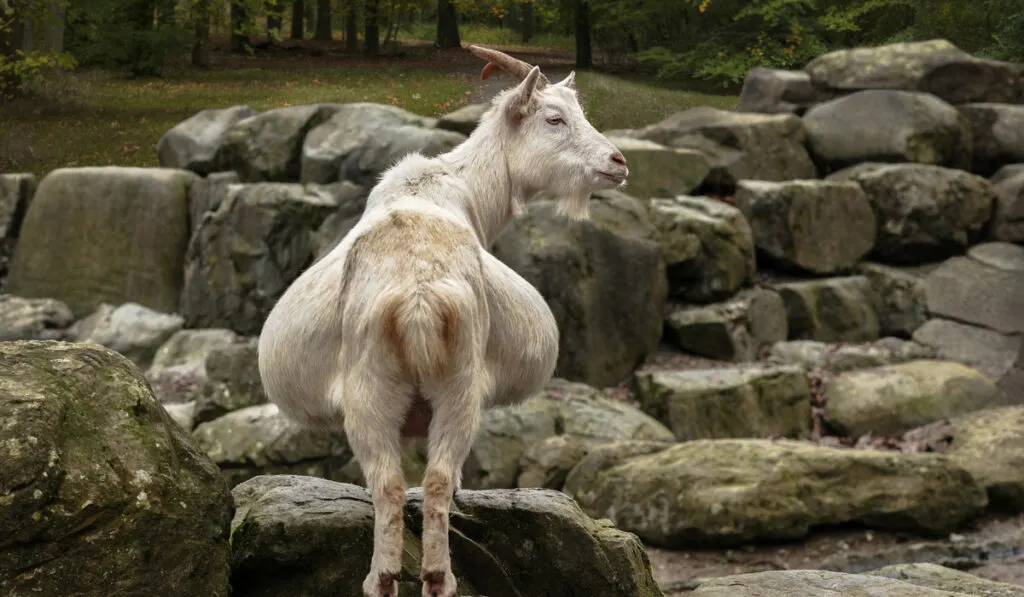
Just like any mammal, a goat fetus can move inside its mamma. The fetus’ movement usually is noticeable at the late stages of pregnancy, around four months.
Observing the goat when she’s lying down and calm is better. This way, minimum excessive movement is here so that you can look at their belly. The baby (or babies) will move to one side so that it won’t be a problem.
6. Tail Ligaments
Now, if you successfully checked your goat’s udder, you’ll be able to check their tail. The reason is the changes that occur when the goat is close to delivery.
If the goat’s tail ligaments are firm, it’s not time yet. However, if they are soft, the future mommy is preparing to give birth.
7. Changes in Behavior
Hormones are an interesting thing. You’ll definitively notice when your goat starts changing behavior.
First, pregnant goats get more languid – they stop running around and usually find it challenging to get up and down due to weight gain and, well, a child inside them.
The pregnancy is especially noticeable when goats start panting.
Not only does it means there’s a baby on the way, but also that it’s quite large. The goat pants because there is less room for the lungs, so they cannot expand fully.
Another change is different food habits – pregnant goats can eat more often but can’t eat a lot because the food simply doesn’t fit in their rumen!
So, next time you notice these changes in your goat(s), you know to suspect they are pregnant.
8. Less Milk Production
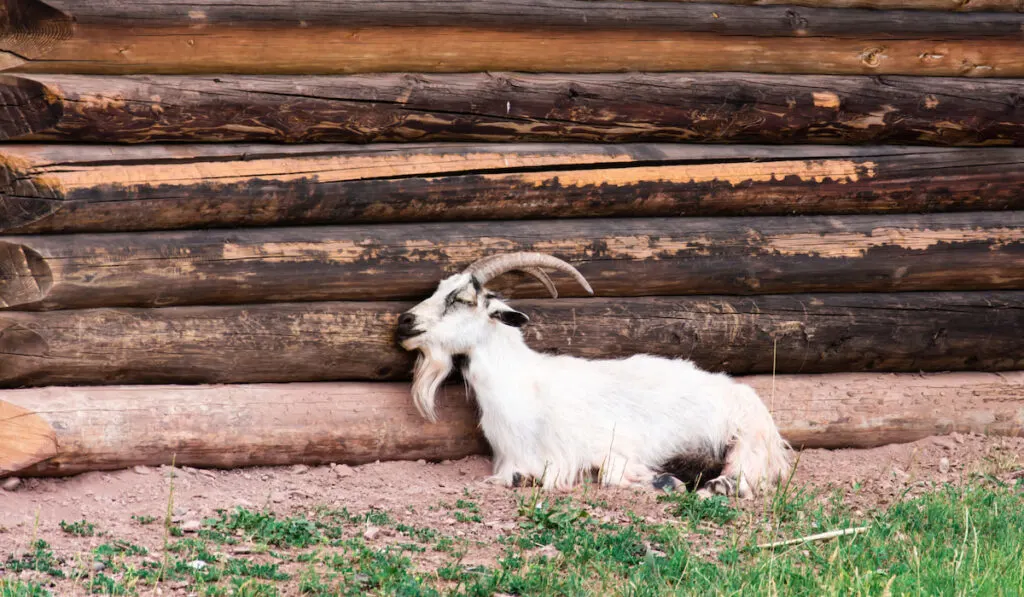
Let’s call it a bonus tip. A good (and relatively early) sign of pregnancy in goats is decreased milk production.
Most of the nutrients and energy that non-pregnant goats use to produce milk are taken to make colostrum.
This is also why pregnant goats eat more and need more rest. So if this is your case (or rather, your goat’s), it’s probably a pregnancy.
In Summary
Now you’re fully equipped with knowledge. Give yourself – and your goats – more time, and don’t forget our tips. They’ll be really handy.
You can be sure that the practical experience will make you a great herder, with your goat family growing successfully.
Resources:
- https://goats.extension.org/goat-bloat/
- https://my.clevelandclinic.org/health/body/22434-colostrum
- https://mranimalfarm.com/milking-goats-causes-decreased-milk-production-goats/
- https://kidadl.com/fun-facts/how-to-tell-if-a-goat-is-pregnant-how-to-get-prepared
- https://www.brimwoodfarm.com/articles/how-to-tell-if-your-goat-is-pregnant
- https://backyardgoats.iamcountryside.com/health/10-ways-to-identify-goat-pregnancy/
